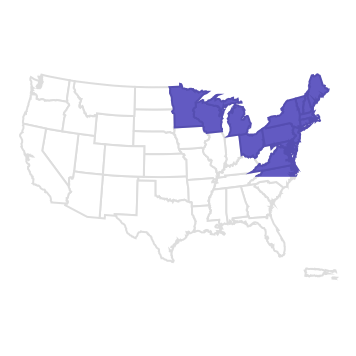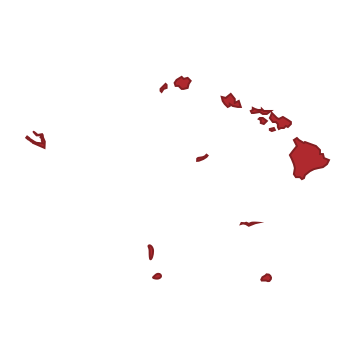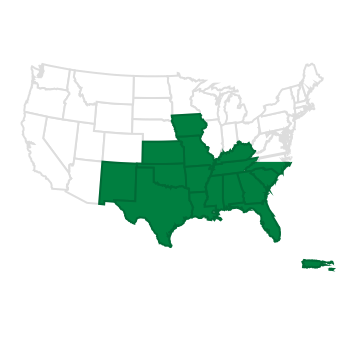About Us
Our Mission
NOAA Fisheries is responsible for the stewardship of the nation's ocean resources and their habitat. We provide vital services for the nation, all backed by sound science and an ecosystem-based approach to management:
- Productive and sustainable fisheries
- Safe sources of seafood
- Recovery and conservation of protected resources
- Healthy ecosystems
U.S. fisheries are among the world’s largest and most sustainable. Seafood harvested from federally-managed U.S. fisheries is inherently sustainable as a result of the U.S. fishery management process. Using the Magnuson-Stevens Act as the guide, NOAA Fisheries assesses and predicts the status of fish stocks, sets catch limits, ensures compliance with fisheries regulations, and reduces bycatch. Eight fishery management councils are key regional partners in U.S. fishery management.
The resilience of our marine ecosystems and coastal communities depend on healthy marine species, including protected species such as whales, sea turtles, corals, and salmon. Under the Marine Mammal Protection Act and the Endangered Species Act, NOAA Fisheries works to recover protected marine species while allowing economic and recreational opportunities.
NOAA Fisheries, also known as the National Marine Fisheries Service, is an office of the National Oceanic and Atmospheric Administration within the Department of Commerce. We have five regional offices, six science centers, and more than 20 laboratories around the United States and U.S. territories, and we work with partners across the nation.

460 fish stocks
We manage 460 stocks or stock complexes in 46 fishery management plans. Under the science-based framework of the Magnuson-Stevens Act and our efforts, 47 stocks have been rebuilt since 2000. More than 90 percent of stocks are not subject to overfishing and 80 percent not overfished.
More than 4 million square miles
Our primary jurisdiction is the U.S. Exclusive Economic Zone, which contains more than 4 million square miles of ocean.
163 endangered and threatened species
We have jurisdiction over 163 endangered and threatened marine species, including 65 foreign species.
1.7 million jobs and $253 billion in sales
We monitor, protect, and sustainably manage the nation’s fisheries, which generated $253 billion in sales impacts and created 1.7 million jobs in the U.S. marine fishing sector and across the broader economy in 2020.
National Oceanic and Atmospheric Administration
U.S. Department of Commerce
More Federal Resources
Regional Highlights




Recent Accomplishments
- Advanced restoration of Gulf of Mexico resources impacted by the 2010 oil spill, completing 43 projects totaling $117 million to restore coastal habitats, oysters, recreational uses, and water quality.
- Led an investigation into fraud where nearly 400,000 pounds of foreign crab meat was falsely labeled as "Product of USA," protecting industry members who abide by the rules and consumers from fraud schemes.
- Established the Seafood Import Monitoring Program, which collects traceable data on 13 imported fish species to help prevent illegal, unreported, and unregulated seafood from entering U.S. commerce.
- Implemented a new, more accurate method for estimating the number of trips taken by recreational anglers, which will improve our understanding of marine ecosystems' health and better guide management decisions.
- Provided $1.5 million to support regional aquaculture pilot projects. The 14 selected projects are developing techniques and business models to grow domestic seafood production and addressing industry barriers.
- Released approximately 200,000 hatchery-reared Chinook salmon into newly restored habitat to establish additional populations of Sacramento River winter-run Chinook salmon and recover these endangered salmon.
Who We Are
Who We Are
NOAA Fisheries employs about 3,000 staff including scientists, policy managers, and enforcement officers, located across the country at our regional offices, science centers and labs, and national headquarters in Silver Spring, Maryland.
Scroll below to meet our leadership and see our organization chart. Or download our organization chart (PDF, 1 page).
Meet Our Leadership
NOAA Fisheries Directorate
NOAA Fisheries Directorate
Office of Sustainable Fisheries
Office of Protected Resources
Office of Habitat Conservation
Office of Policy
Alaska Regional Office
Greater Atlantic Regional Fisheries Office
Pacific Islands Regional Office
Southeast Regional Office
West Coast Regional Office
NOAA Fisheries Directorate
NOAA Fisheries Directorate
NOAA Fisheries Directorate
Office of Science and Technology
Alaska Fisheries Science Center
Northeast Fisheries Science Center
Northwest Fisheries Science Center
Pacific Islands Fisheries Science Center
Southeast Fisheries Science Center
Southwest Fisheries Science Center
NOAA Fisheries Directorate
NOAA Fisheries Directorate
Office of Aquaculture
Office of Law Enforcement
Office of International Affairs, Trade, and Commerce
Office of Management and Budget
Office of Chief Information Officer
Office of Communications
EEO & Diversity
Human Capital Management Office
Where We Work
NOAA Fisheries Locations

Regional Office
Science Centers & Labs
Our History
The Foundations of Fishery Science and Management

1871 – President Ulysses S. Grant creates the United States Commission of Fish and Fisheries. It is the first federal agency focused on natural resource conservation, and its founding represents the genesis of today’s NOAA Fisheries, or National Marine Fisheries Service. The Smithsonian Institution operates the Commission. Smithsonian Assistant Secretary Spencer Baird serves as the first U.S. Fish Commissioner until 1888. To this day, NOAA Fisheries continues a scientific relationship with the Smithsonian Institution’s National Museum of Natural History, which is also home to the Baird Auditorium and the world’s largest collection of fish.
1872 – The first federal fish hatchery, known as the Baird Hatchery, is established on the McCloud River in California to replenish salmon populations impacted by the California gold rush.

The original Woods Hole Laboratory.
1885 – The original Woods Hole Laboratory is completed. It is the first of more than 20 present-day NOAA Fisheries laboratories. It later moves to a new building in 1960. Today, visitors are welcome at the Woods Hole Aquarium.
1889 – The Federal Fisheries Act (amended in 1900) requires each person, company, or corporation to establish a fish hatchery near their fishing operation and to produce "four times" the number of mature salmon taken during the fishing season.
Ushering in a New Era of Natural Resource Awareness
1903 – The U.S. Fish Commission is renamed the U.S. Bureau of Fisheries and placed under the newly created Department of Commerce and Labor.
1913 – The Department of Commerce and Labor splits into two separate departments: the Department of Commerce and the Department of Labor. The Department of Commerce retains the Bureau of Fisheries.
1939 – The Act of August 11, 1939 (renamed the Saltonstall-Kennedy Act in 1954) is signed into law. It establishes a fund to provide grants or cooperative agreements for research and development projects addressing aspects of U.S. fisheries including harvesting, processing, and marketing.
1940 – The 1940 Reorganization Plan No. III merges the Bureau of Fisheries and the Biological Survey as part of U.S. Fish & Wildlife under the Department of the Interior. The plan also establishes five regional fisheries offices in Juneau, Alaska; Gloucester, Massachusetts; Honolulu, Hawaii; St. Petersburg, Florida; and Portland, Oregon.
1956 – The Fish and Wildlife Act creates the U.S. Fish and Wildlife Service, which initially includes two bureaus: the Bureau of Commercial Fisheries (the descendant of the original U.S. Fish Commission) and the Bureau of Sport Fisheries and Wildlife. Under the Act, seals, sea lions, dolphins, and porpoises are managed by the Bureau of Commercial Fisheries. Sea otters, manatees, walruses, and most freshwater fish hatcheries are managed by the Bureau of Sport Fisheries and Wildlife. The Act also declares a National Fishery Policy recognizing the nation’s fish, shellfish, and wildlife as a valuable, renewable natural resource.
1958 – The first United Nations Conference on the Law of the Sea convenes in Geneva with 86 nations participating. For the first time, broad agreement is reached on a system of rules to guide nations toward preserving marine species.
1966 – The Sea Grant Act establishes an academic/industry/government partnership that uses the nation’s existing collegiate and university resources to address the marine and coastal resource management needs of U.S. citizens.

1967-1969 – Marine resource concerns lead Congress to authorize the creation of the Commission on Marine Science, Engineering and Resources. In January 1967, President Lyndon B. Johnson appoints the 15 member commission to begin to study the nation’s marine problems and needs. Chaired by Julius A. Stratton of the Ford Foundation, it is simply referred to as the “Stratton Commission.” The Commission presents its final report to Congress on January 11, 1969 and recommends the creation of a new federal entity—the National Oceanic and Atmospheric Agency. The agency would include the Bureau of Commercial Fisheries and other federal marine and anadromous fishery functions, the National Sea Grant College Program, and other agencies.
Establishing the Infrastructure of Science-Based Stewardship
1969 – The National Environmental Policy Act requires federal agencies to integrate environmental values into their decision-making processes by considering the environmental impacts of their major proposed actions. Its primary goal is to foster better decision making that takes into account all of the environmental impacts of an action and involve the public in that decision making.
1970 – President Nixon and Congress establish the National Oceanic and Atmospheric Administration in the Department of Commerce under Reorganization Plan No. 4 of 1970. As part of the reorganization plan, the Bureau of Commercial Fisheries is transferred from the Department of the Interior to the Department of Commerce and renamed the National Marine Fisheries Service.
1971 – The Secretary of Commerce establishes the Marine Fisheries Advisory Committee to advise on marine fisheries resource issues.
1972 – The Marine Mammal Protection Act establishes a moratorium on taking marine mammals in U.S. waters and by U.S. citizens on the high seas.
1973 – The Endangered Species Act protects species and populations whose numbers are low or declining. NOAA Fisheries is responsible for marine species under the law.
1976 – The Fishery Conservation and Management Act establishes eight regional fishery management councils and a 200-mile fishery conservation zone.
1978 – NOAA Fisheries begins receiving federal funding for the Saltonstall-Kennedy Grant Program. In 1980, Congress enacts formal program authority to fund fishing industry development projects. It expands this authority in 1983, establishing a minimum percentage of grant funds to be used to provide financial assistance to projects.

Senators Warren Magnuson of Washington and Ted Stevens of Alaska.
1980 – The original Fishery Conservation and Management Act is renamed the Magnuson Fishery Conservation and Management Act in honor of Washington state Senator Warren Magnuson.
Implementing the Missions & Strengthening the Provisions
1980 – The National Aquaculture Act of 1980 establishes aquaculture as a national policy priority for the United States and creates the Interagency Working Group on Aquaculture.
1981 – Amendments to the Lacey Act make it illegal to trade in fish, wildlife, or plants taken in violation of any U.S. or tribal law, treaty, or regulation.
1983 – President Reagan designates the fishery conservation zone as the U.S. Exclusive Economic Zone.
1986 – NOAA begins placing fisheries observers (professionally trained biological scientists with a bachelor’s degree in natural sciences and rigorous training) on domestic fishing vessels. Today, the program supports nearly 900 observers and at-sea monitors.
1990 – The Dolphin Protection Consumer Information Act is passed, mandating the establishment of a national tuna tracking program.
1992 – The Marine Mammal Health and Stranding Response Program is formalized through amendments to the Marine Mammal Protection Act.

1994 – Eastern Pacific Gray whales are removed from the Endangered Species list.
1995 – Marine Mammal Protection Act re-authorization establishes Take Reduction Teams and requires marine mammal stock assessments. The first Fisheries of the United States report is published.
1996 – The Sustainable Fisheries Act recognizes the importance of healthy habitat for commercial and recreational fisheries and establishes essential fish habitat requirements. The Community-Based Restoration Program is created to help implement coastal restoration projects.
1997 – NOAA releases the first annual report on the status of U.S. Fisheries (Status of Stocks).
1998 – Vessel Monitoring Systems are put in place to track commercial fishing operations.
1999 – The International Dolphin Conservation Program Act amends the Marine Mammal Protection Act, providing greater protections for dolphins in the eastern Pacific.
Return on Investments in Stewardship
2001 – Atlantic sea scallops are declared rebuilt following declines in the 1990s.
2006 – The first Fisheries Economics of the United States report is published, detailing the economic impacts of U.S. commercial and recreational fishing activities and fishing-related industries.

Former President George W. Bush signs the MSA Reauthorization Act in 2007.
2007 – The Magnuson-Stevens Fishery Conservation and Management Reauthorization Act is signed into law and places U.S. fisheries on the path to global leadership. Revisions to the original Magnuson-Stevens Act include annual catch limits and accountability measures for every fishery. It strengthens the role of science through peer review, scientific and statistical committees, and the Marine Recreational Information Program. The international provisions of the Reauthorization Act strengthen international fisheries management organizations. They also direct the United States to address illegal, unreported, and unregulated fishing and bycatch of protected marine life.
2008 – The Ship Strike Reduction Rule is implemented to protect North Atlantic right whales and other whales, dolphins, and porpoises from ship strikes.
2009 – NOAA Fisheries begins an initiative to strengthen partnerships with the recreational fishing community.
2010 – The Deepwater Horizon oil spill releases more than 200 million gallons of crude oil into the Gulf of Mexico for a total of 87 days, making it the largest marine oil spill in U.S. history. In 2016, NOAA releases the final Deepwater Horizon restoration plan as part of an $8.8 billion legal settlement with BP.
2011 – The Shark Conservation Act improves the conservation of sharks domestically and internationally.
2013 – The Eastern population segment of Steller sea lions is removed from the Endangered Species list.
2014 – The OceanAdapt tool is launched to track shifting fish distribution in response to climate change. A Presidential Task Force is established to combat illegal, unreported and unregulated fishing and seafood fraud. The Task Force involves 12 federal agencies, co-led by the State Department and NOAA. It identified 15 actions to strengthen enforcement. One of those actions resulted in establishing the Seafood Import Monitoring Program for 17 key species vulnerable to IUU and seafood fraud.
2016 – As we celebrate the 40th anniversary of the Magnuson-Stevens Act, overfishing and overfished numbers hit historic all-time lows. Just 8 percent of managed fish stocks are on the overfishing list and 16 percent of stocks are considered overfished—all of them are under rebuilding plans.
2016 – The United States represents one of the largest single markets for fish and fish products, second only to the European Union in imports. In 2016, the European Union, United States, and Japanese markets together accounted for approximately 64 percent of the total value of world imports of fish and fish products.

2017 – The percent of stocks experiencing overfishing dropped by 63 percent since 2000. The percent of overfished stocks dropped by 61 percent since 2000.
2019 – An estimated 91 percent of all U.S.-managed seafood species are not experiencing overfishing with 82 percent of stocks not overfished and 45 stocks fully rebuilt since 2000. This is a 97 percent increase in the Fish Stock Sustainability Index since tracking began in 2000.




